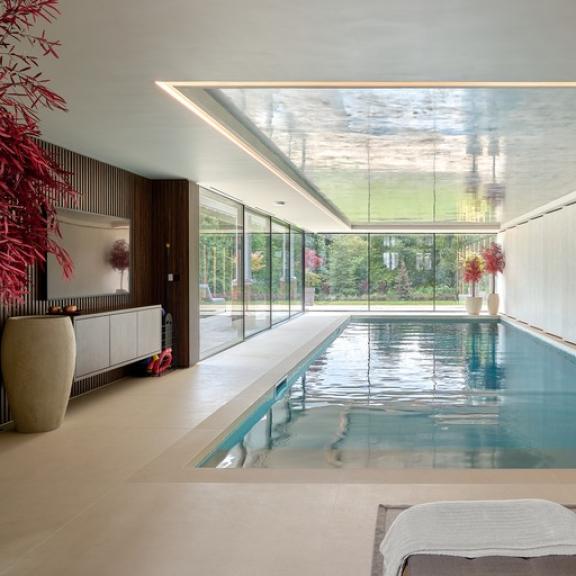BIID Supports Major New Design Consultation
Interior designers can help shape the future of the UK’s design system

The UK government has launched a consultation on reforming the legal framework for design protection. Run by the Intellectual Property Office (IPO), the consultation seeks views on how to modernise design rights, address weaknesses in the current system, and ensure that UK designers remain competitive in global markets.
Context
The UK design sector contributes close to £100 billion a year to the economy and supports nearly 2 million jobs across 80,000 businesses. These range from independent studios to large manufacturing firms and global brands.
Design rights are central to this success. They protect the appearance of products — from clothing to vehicles to digital interfaces — and give businesses legal grounds to take action against copying or misuse. Rights also support commercial licensing, helping businesses generate revenue from their creations.
However, there have been calls for reform for many years. The existing framework is made up of overlapping protections that are not always clear or easy to navigate, particularly for small and medium-sized enterprises. Some weaknesses have led to abuse, with applicants registering designs for products they did not create. Brexit has created further complications by removing automatic EU-wide coverage for designs first disclosed in the UK.
The IPO also notes that the system has not kept pace with technological developments, including digital design and the role of artificial intelligence.
Scope of the consultation
The consultation sets out a series of possible reforms across five main areas.
1. Tackling design theft and abuse
- Introducing search and examination powers to check whether designs meet the standards of novelty and originality.
- Creating “bad faith” provisions to block applications made dishonestly, such as attempts to register well-known designs not owned by the applicant.
2. Simplifying the system
- Harmonising time limits and procedures across different types of design rights.
- Consolidating the various categories of unregistered design protection.
- Issuing clearer and more accessible guidance.
- Considering a deferment option, allowing applicants to delay publication of their design for up to 18 months. This would be useful in sectors with long product development cycles.
3. Addressing post-Brexit issues
- Exploring solutions for UK designers who no longer receive automatic EU protection following first disclosure in the UK. The aim is to provide businesses with greater certainty when operating across both markets.
4. Improving access to justice
- Examining whether a small claims track could be created within the Intellectual Property Enterprise Court specifically for design disputes. This would lower costs and reduce barriers for smaller firms seeking to enforce their rights.
5. Updating for the digital economy
- Allowing new file formats, such as CAD files and video clips, to be used in design applications.
- Reviewing and updating legal definitions to ensure they cover new and emerging technologies.
- Considering whether designs created entirely by artificial intelligence should qualify for protection.

Process and participation
The consultation will run for 12 weeks. The IPO is inviting responses from across the design sector, including:
- Independent designers and small businesses.
- Large brands and manufacturers in industries such as fashion, automotive, and interiors.
- Digital agencies and technology firms.
- Legal and professional advisers with expertise in intellectual property.
Stakeholders are encouraged to provide views on how the proposals would affect their work and what changes would best support the UK design industry.
Policy significance
The consultation could lead to the most substantial reform of UK design protection in decades. The government’s stated goals are to:
- Simplify a system that is currently fragmented and difficult to navigate.
- Prevent abuse of design rights by creating more effective screening and enforcement mechanisms.
- Ensure that the legal framework reflects new realities, including Brexit and digital technologies.
- Make enforcement more accessible to smaller businesses.
The outcome of the consultation will inform policy options for ministers, who will decide which reforms to pursue.
Implications
For designers and businesses, the consultation represents an opportunity to shape the rules that govern how creative work is protected. Stronger and clearer rights could provide more certainty, reduce legal costs, and improve competitiveness. For policymakers, the challenge is to balance the needs of diverse industries — from traditional crafts to advanced digital sectors — while ensuring the framework is future-proof.
If implemented, the reforms would bring UK design law closer in line with the realities of modern practice and international competition. They would also align with the government’s broader aim of supporting the creative industries as a key driver of economic growth.
The BIID’s response
The BIID has welcomed the consultation:
Angela Bardino, Past President of the BIID, said ‘The British Institute of Interior Design supports the government's review of design protection laws and sees this as a positive opportunity to modernise the system for our industry. Interior designers create original furniture, lighting, textiles, and other unique elements as part of their design that need effective protection. We're encouraged by the potential to simplify the current framework, particularly for smaller practices. We encourage all interior designers to participate in this consultation to help shape improved design protection for our sector.’
Have your say
To respond to the consultation please visit this website.
The consultation will close on 27th November 2025.
Explore new resources from the BIID. Seeing a padlock? Just login or become a member to view.
View the highlights from our 60th anniversary party
We asked Anna Burles: What makes the perfect software?
Discover the smart home technology awards with Platinum Partner, CEDIA
Explore the latest, member-exclusive, templates designed to make your life easier.
University of Gloucestershire wins the BIID Student Design Challenge 2025.





